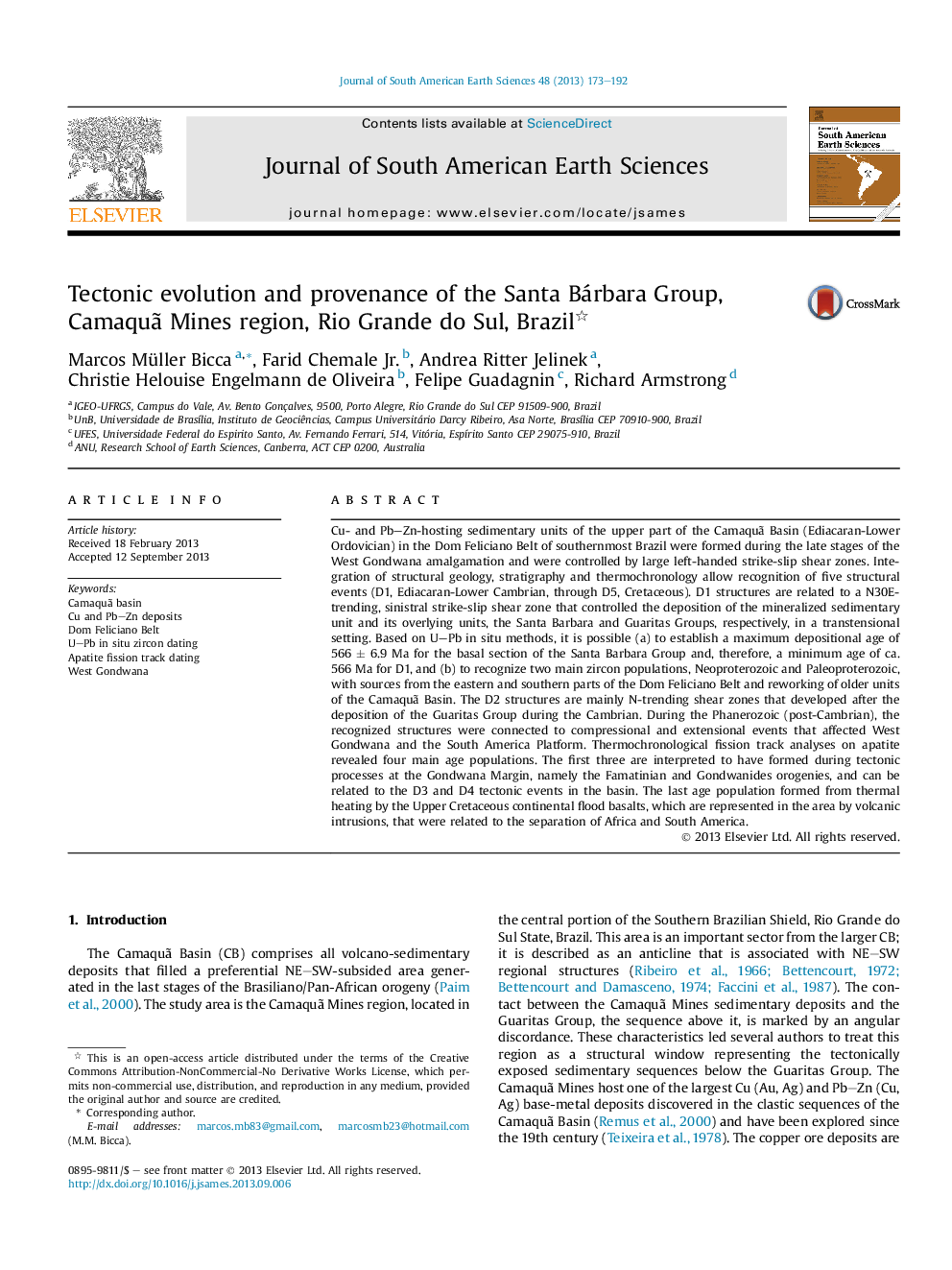| کد مقاله | کد نشریه | سال انتشار | مقاله انگلیسی | نسخه تمام متن |
|---|---|---|---|---|
| 4682379 | 1635161 | 2013 | 20 صفحه PDF | دانلود رایگان |

• We examine the main U–Pb detrital zircon ages of the Brasiliano host rocks of Camaquã Mineralization.
• We apply structural and apatite fission track analysis to identify the tectonic events.
• A dominant Neoproterozoic and Paleoproterozoic source areas are recognized in the Camaquã Mines.
• Main Phanerozic events of the West Gondwana were recorded in the Brasiliano Camaquã Basin.
• Mesozoic structural features and basic dykes are well constrained in the Camaquã Basin.
Cu- and Pb–Zn-hosting sedimentary units of the upper part of the Camaquã Basin (Ediacaran-Lower Ordovician) in the Dom Feliciano Belt of southernmost Brazil were formed during the late stages of the West Gondwana amalgamation and were controlled by large left-handed strike-slip shear zones. Integration of structural geology, stratigraphy and thermochronology allow recognition of five structural events (D1, Ediacaran-Lower Cambrian, through D5, Cretaceous). D1 structures are related to a N30E-trending, sinistral strike-slip shear zone that controlled the deposition of the mineralized sedimentary unit and its overlying units, the Santa Barbara and Guaritas Groups, respectively, in a transtensional setting. Based on U–Pb in situ methods, it is possible (a) to establish a maximum depositional age of 566 ± 6.9 Ma for the basal section of the Santa Barbara Group and, therefore, a minimum age of ca. 566 Ma for D1, and (b) to recognize two main zircon populations, Neoproterozoic and Paleoproterozoic, with sources from the eastern and southern parts of the Dom Feliciano Belt and reworking of older units of the Camaquã Basin. The D2 structures are mainly N-trending shear zones that developed after the deposition of the Guaritas Group during the Cambrian. During the Phanerozoic (post-Cambrian), the recognized structures were connected to compressional and extensional events that affected West Gondwana and the South America Platform. Thermochronological fission track analyses on apatite revealed four main age populations. The first three are interpreted to have formed during tectonic processes at the Gondwana Margin, namely the Famatinian and Gondwanides orogenies, and can be related to the D3 and D4 tectonic events in the basin. The last age population formed from thermal heating by the Upper Cretaceous continental flood basalts, which are represented in the area by volcanic intrusions, that were related to the separation of Africa and South America.
Figure optionsDownload as PowerPoint slide
Journal: Journal of South American Earth Sciences - Volume 48, December 2013, Pages 173–192